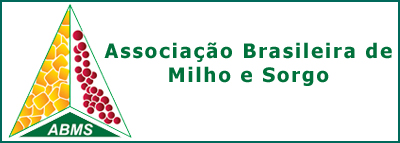GENETIC DIVERSITY AMONG Colletotrichum sublineolum PATHOTYPES ISOLATED FROM SORGHUM (Sorghum bicolor)
DOI:
https://doi.org/10.18512/1980-6477/rbms.v5n02p%25pPalavras-chave:
Colletotrichum sublineolum, Sorghum bicolor, SDS-PAGE, RAPD, ARDRAResumo
Sorghum anthracnose, caused by Colletotrichum sublineolum is a serious disease in Brazil. The fungus is highly variable pathogenically with many physiological races. The present study was made to evaluate the usefulness of molecular methods (SDS-PAGE, RAPD, ARDRA and rDNA sequencing) for identifying C. sublineolum pathotypes isolated from sorghum. Although protein profile (SDS-PAGE) showed a relative low level of polymorphism, differences could be observed due to presence/absence of some polypeptides as well as to intensity of some bands among pathotypes. DNA profile of arbitrarily amplified sequences (RAPD) using sixteen random primers revealed a high degree of polymorphism while amplified rDNA (ITS region and 18S gene) digested with six different restriction enzymes (ARDRA) showed similar patterns. Nucleotide sequencing analysis of the complete ITS region and partial sequencing of 18S rRNA gene were useful for revealing genetic differences among the five pathotypes. In the present study, RAPD and rDNA sequencing were the most profitable methods for identifying C. sublineolum pathotypes.
Downloads
Publicado
Como Citar
Edição
Seção
Licença
Autores que publicam nesta revista concordam com os seguintes termos:- Autores mantém os direitos autorais e concedem à revista o direito de primeira publicação, com o trabalho simultaneamente licenciado sob a Creative Commons Attribution License que permitindo o compartilhamento do trabalho com reconhecimento da autoria do trabalho e publicação inicial nesta revista.
- Autores têm autorização para assumir contratos adicionais separadamente, para distribuição não-exclusiva da versão do trabalho publicada nesta revista (ex.: publicar em repositório institucional ou como capítulo de livro), com reconhecimento de autoria e publicação inicial nesta revista.
- Autores têm permissão e são estimulados a publicar e distribuir seu trabalho online (ex.: em repositórios institucionais ou na sua página pessoal) a qualquer ponto antes ou durante o processo editorial, já que isso pode gerar alterações produtivas, bem como aumentar o impacto e a citação do trabalho publicado



